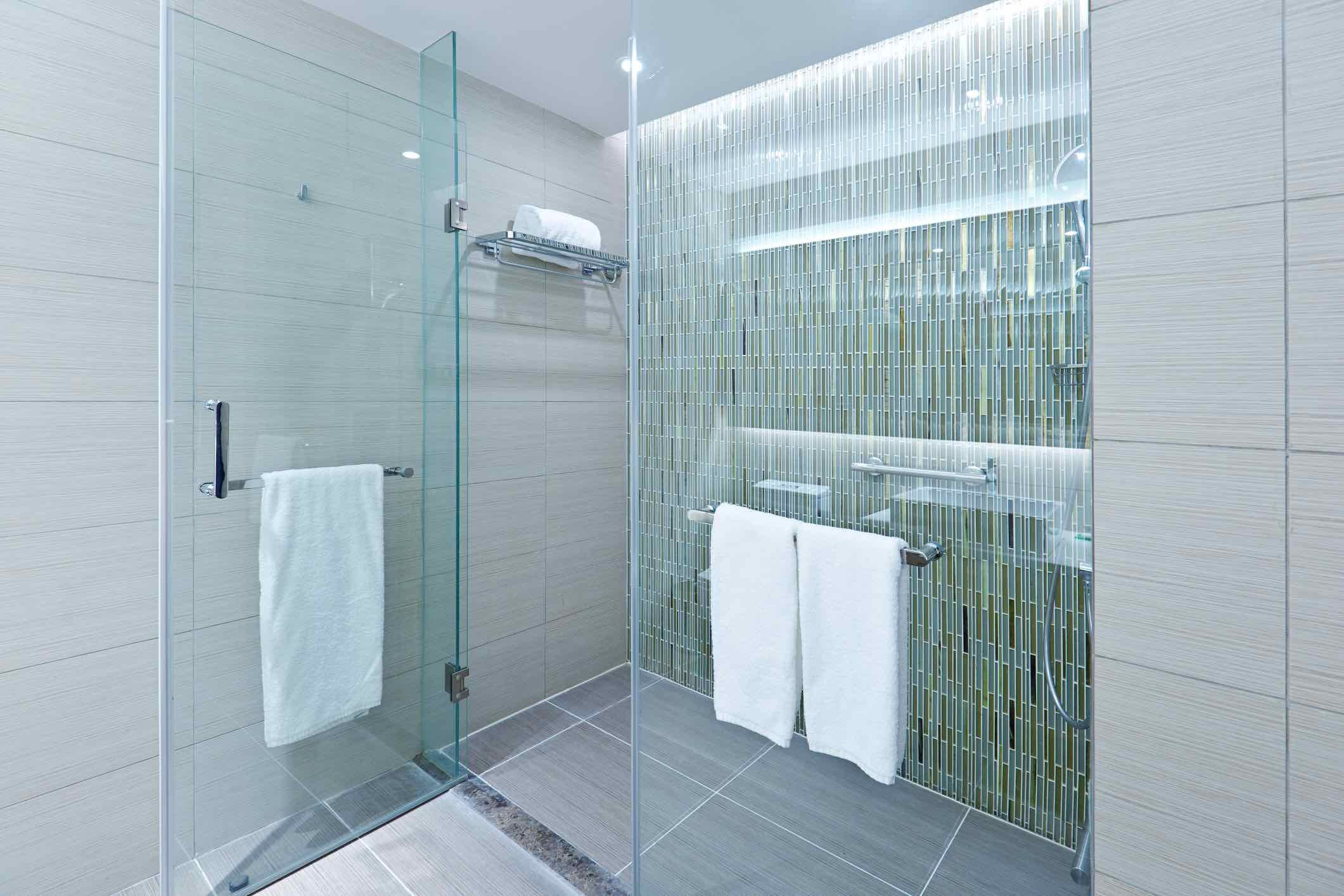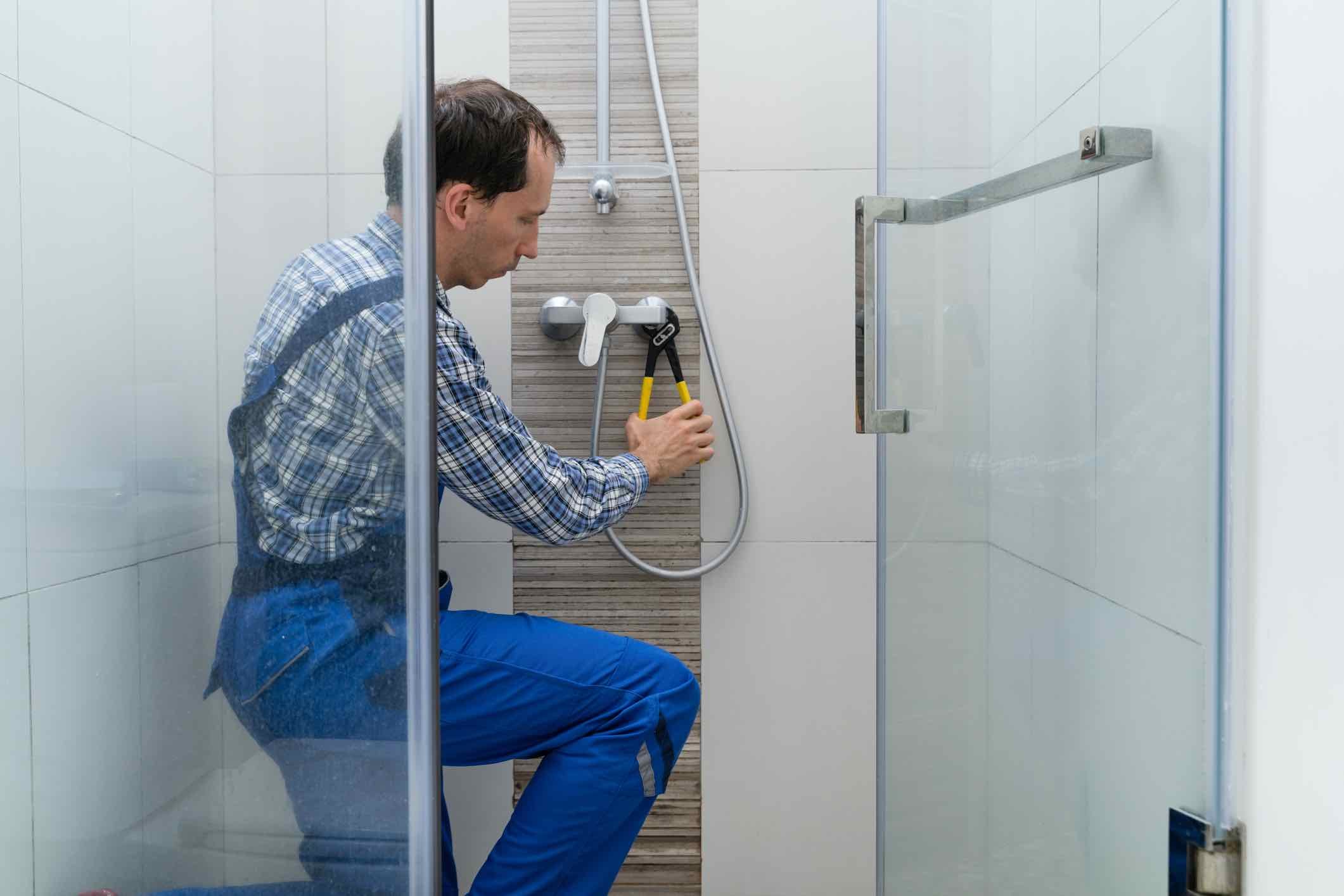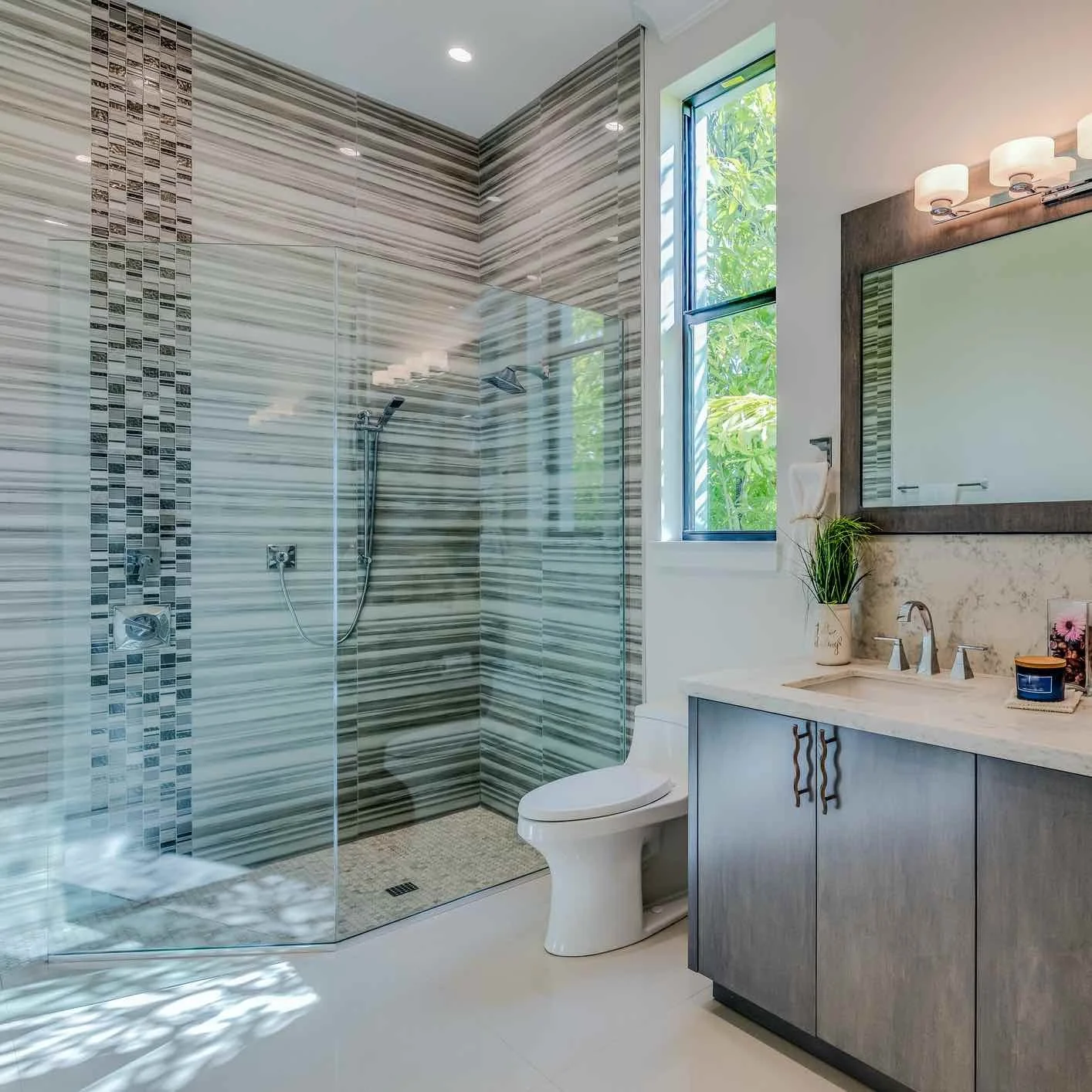Convert a Tub to a Walk-In Shower: Shower Conversion Guide
Are you tired of your old bathtub and longing for a more convenient and modern bathing experience? Converting your tub into a walk-in shower might be the perfect solution for you. Not only does this upgrade enhance your bathroom aesthetics, but it also offers practicality and accessibility benefits. In this comprehensive guide, we will explore the process of a bathtub to shower project, discuss its impact on your home's value, and provide valuable tips to ensure a successful transformation. So, let's dive in and discover how you can turn your ordinary tub into a luxurious shower.
Understanding the Tub to Shower Conversion Process
Replacing your bathtub with a walk-in shower is a project that requires careful planning and execution. By following a few simple steps, you can achieve the bathroom of your dreams without the hassle of a lengthy renovation. Let's take a closer look at the process:
Step 1: Consultation
The first step in the tub to walk-in shower process is to schedule a consultation with a professional. Reach out to a reputable contractor to discuss your ideas and requirements (find local walk-in shower contractors here). During this consultation, they will assess your space, provide design options, and offer expert advice tailored to your needs. This initial consultation is crucial in ensuring that your vision aligns with practical considerations and budget constraints.
Step 2: Design
Once you have consulted with an expert, it's time to dive into the design phase. Your chosen contractor will guide you through various design options and accessories that suit your style and preferences. Whether you prefer a sleek and minimalist shower or a more luxurious and spa-like experience, there are endless possibilities to explore. Consider updating your shower walls, replacing outdated fixtures, utilizing modern acrylic easy-to-clean materials, and incorporating modern bathroom technology like the KOHLER DTV system for a truly indulgent bathing experience.
Step 3: Installation
With the design finalized, it's time to bring your dream shower to life. The installation phase is where the magic happens, and you can witness the transformation of your tub into a beautiful walk-in shower. The installation team will handle the installation process, ensuring a seamless renovation. The best part? Your new shower can be installed in as little as one day, minimizing any inconvenience and downtime.
The Impact of Tub to Shower Conversion on Home Value
If you're considering a bathroom remodel and changing your tub with a shower, you might be wondering about its impact on your home's value. The good news is that changing a tub to a shower is widely regarded as one of the best bathroom upgrades for resale value. Here's why:
Aligning with Current Trends: Showers are becoming increasingly popular, with many homeowners opting for shower-only spaces in their bathrooms. By converting your tub to a shower, you are aligning your home with current design trends and appealing to prospective buyers who prioritize functionality and convenience.
Appealing to a Wide Range of Buyers: Many homebuyers, particularly those with small children, prefer a master bath with both a bathtub and a shower. By keeping at least one tub in your home, you ensure that your property appeals to a broader range of potential buyers.
Updated Fixtures and Technology: During the design process, you have the opportunity to update your shower fixtures and incorporate modern bathroom technology. Upgrading to sleek and energy-efficient fixtures, such as rain shower heads, glass doors, and smart water systems, adds value and enhances the overall appeal of your bathroom.
Improved Accessibility: Walk-in showers offer greater accessibility compared to traditional tubs, making your home more appealing to buyers with mobility issues that find it difficult step into a tub to take a shower. The convenience and safety of a walk-in shower can be a significant selling point for potential homeowners.
It's important to note that the impact on home value may vary depending on factors such as location, market trends, and the overall quality of the renovation. To maximize the return on your investment, consider updating your shower walls, investing in quality fixtures, and ensuring a well-executed installation.
Mistakes to Avoid During a Tub-to-Shower Conversion
While a tub to shower upgrade can greatly enhance your bathroom, it's essential to be aware of common mistakes that people often make during the process. By avoiding these pitfalls, you can ensure a successful transformation. Let's explore some of the most common mistakes and how to sidestep them:
Mistake 1: Misunderstanding the Project
One of the most significant mistakes is not fully understanding the scope and goals of the bathtub to shower changeover. It's crucial to have realistic expectations and recognize that this upgrade does not involve a complete bathroom overhaul. Research and educate yourself on the process, its limitations, and the expected outcomes. By having a clear understanding of what to expect, you can avoid disappointment and make informed decisions throughout the project.
Mistake 2: Neglecting Proper Planning and Design
Another common mistake is rushing into the project without proper planning and design considerations. It's essential to work closely with a professional, such as a contractor or designer, to create a well-thought-out plan that aligns with your needs and aesthetic preferences. Consider factors such as space limitations, plumbing requirements, and the overall layout of your bathroom. By investing time in the planning and design phase, you can avoid costly mistakes and ensure a functional and luxurious shower upgrade.
Mistake 3: Overlooking Plumbing and Waterproofing
During the conversion process, it's crucial to pay attention to plumbing and waterproofing. Overlooking either can lead to leaks, water damage, and costly repairs down the line. Ensure everything is up to code and consider hiring a professional plumber to handle any necessary modifications. Additionally, proper waterproofing is essential to prevent water seepage and maintain the integrity of your bathroom. Utilize high-quality materials and consult experts to ensure a watertight and durable shower stall.
Mistake 4: Neglecting Proper Ventilation
Proper ventilation is an important consideration when installing a shower. Insufficient ventilation can result in moisture buildup, which can lead to mold and mildew growth. Consider installing a ventilation fan or improving the existing ventilation system to ensure adequate air circulation. Proper ventilation not only helps maintain a healthier environment but also prolongs the lifespan of your shower and prevents issues related to excess moisture.
Mistake 5: Sacrificing Functionality for Aesthetics
While aesthetics are important, it's crucial not to sacrifice functionality for the sake of visual appeal alone. Prioritize features and design elements that enhance usability and accommodate your specific needs. Consider factors such as accessibility, storage options, and ease of cleaning when selecting fixtures and accessories. Striking the right balance between aesthetics and functionality will ensure a shower that not only looks beautiful but also meets your practical requirements.
Tub into a Walk-In Shower Conversion: Options and Considerations
When it comes to converting your tub to a walk-in shower, you have several options to choose from. Let's explore two popular approaches and the considerations associated with each:
Option 1: Tear Out the Tub and Build a New Shower
One option is to remove the existing bathtub and build a brand-new shower in its place. While this approach requires more extensive work and professional assistance, it offers flexibility and customization options. Here are some key considerations for this option:
Space Availability: Assess the available space once the tub is removed to determine if it can accommodate a walk-in shower. Consider adding a tile or solid surface curb to prevent water from spilling out into the bathroom.
Shower Door Considerations: If you plan to have a shower door, ensure there is enough room for it to swing open without obstruction. Alternatively, you can opt for a hanging curtain or a partial glass panel to contain water while maintaining an open feel.
Resale Value: Keep in mind that removing the bathtub entirely may impact the value, as some homebuyers prefer a tub for bathing children. If this is a concern, consider updating the bathtub instead of replacing it completely.
Option 2: Retrofit the Plumbing for a Combination Shower-Tub Unit
If you prefer to keep the existing bathtub while adding a shower, retrofitting the plumbing is a less invasive solution. This option allows you to maintain the original bathtub's functionality while incorporating a shower. Consider the following factors for this approach:
Plumbing Considerations: Retrofitting the plumbing involves opening up the wall adjacent to the bathroom to install the necessary pipes and/or drains for the shower. Ensure that the modifications adhere to local building codes and regulations.
Waterproofing and Enclosure: To ensure a watertight shower area, consider installing tile on the walls for durability and visual appeal. If there is a low window in the tub area, you might need to wall it off or replace it with water-resistant materials, such as glass blocks.
Enclosure Options: Decide on the type of enclosure for your shower-tub combination. Sliding doors mounted to the top of the tub offer a practical solution, while a shower curtain with a plastic liner provides a more cost-effective and decorative option.
Prefabricated Shower Kits: Shower stall kits are available to replace a tub and include a shower pan with an exact footprint of the old tub. This walk in shower remodel kit allows you to create a shower stall in the same space with a shower base and lower your conversion cost.
Regardless of the chosen option, converting a bathtub provides an opportunity to update your bathroom holistically. Consider upgrading your ventilation system, improving lighting, and incorporating additional amenities like benches, shelves, ceramic tile, or niches for a more luxurious bathing experience.
Converting a Tub: A Value-Adding Remodel Upgrade
Converting your tub to a walk-in shower is not only a practical decision but also a value-adding upgrade for your home. By embracing current design trends and prioritizing functionality, you can transform your bathroom into a haven of relaxation and convenience. Remember to avoid common mistakes by understanding the project, planning properly, and ensuring essential considerations such as plumbing, waterproofing, and ventilation. With careful attention to detail and the expertise of professionals, you can achieve a seamless bathroom remodel that enhances your bathroom experience and increases the appeal and value of your home. So, embark on this transformative journey and enjoy the benefits of a modern, stylish, and accessible walk-in shower.








